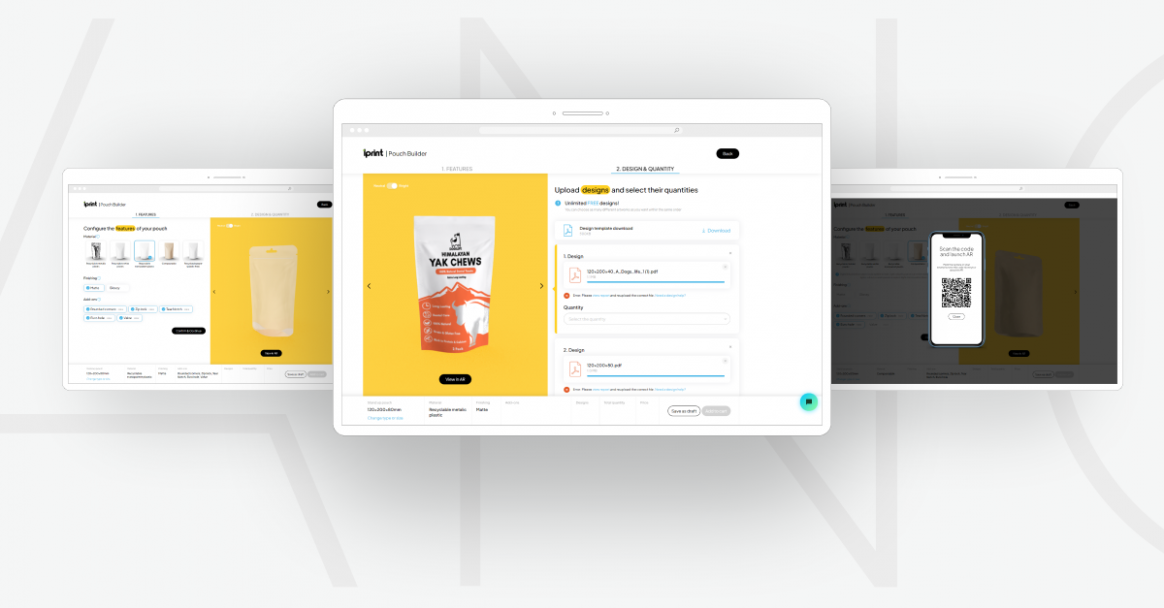Product Configurator in WordPress
Sales based on product customization is a common business strategy in many industries, involving the creation of unique and tailored products that meet individual customer needs and preferences.
The main goal of this model is to provide customers with a unique shopping experience, increase customer loyalty and satisfaction, and maximize sales.
Brands selling personalized products through WooCommerce on WordPress often require online tools that facilitate customers in customizing products according to their preferences.
What to consider when choosing a product configurator?
-
Simple and intuitive interface: It should enable easy navigation with clear instructions and guidance throughout the configuration process.
-
High-quality real-time product visualization: Utilizing 3D models or high-quality 2D renders allows customers to see what the final product will look like. Features like product rotation and zooming, achieved through 3D models, enhance the shopping experience.
-
Flexibility in configuration options: A rich set of customizable product options such as color, size, material, additional features, etc., should be easily added, removed, or modified during the configuration process.
-
Automatic price adjustment: The price should change automatically based on the selections made.
-
Configuration saving and sharing: The ability to save the product configuration and share it with others or use it later is essential.
-
Adaptation for mobile devices: Optimizing the interface for various devices ensures consumers can use the configurator on both computers and smartphones.
-
Seamless integration with the shopping cart: Easy transfer of the customized product to the shopping cart for a smooth checkout process.
How to build and implement a product configurator in a Woocommerce store step by step?
-
Requirements Analysis: Precisely determine the necessary configuration options for your products. Check if there are available WooCommerce plugins that can meet these requirements or if you need dedicated configuration software.
-
Selection of Visualization Tool: If you have 3D product models, consider 3D visualization tools like Sketchfab or Verge3D. These allow customers to see their customized products from different perspectives and zoom in on details. If you have enough images or renders, you can use a configurator that visualizes the product in 2D.
-
Planning Rules and Configuration Process: Collaborate with the company responsible for building the configurator to design a logical configuration process that is clear and user-friendly.
-
Tool Layout Design: Use ready-made solutions or design the appearance of the configurator, considering all necessary options. Configurators can be in the form of pop-up windows on the product page or embedded on a separate page, especially if the configuration is divided into stages.
-
Integration: If you opt for a custom online configurator, plan the integration of the tool with your online store. Ensure there are suitable solutions on both the store and configurator sides to ensure smooth operation.
-
Customizing WooCommerce Products: Customize product options in WooCommerce so that the configurator can effectively communicate with the shopping cart and WooCommerce payment system. Remember to discuss this step with the creators of the configurator.
-
Performance Optimization: Optimize the configurator for performance to ensure smooth and fast user experiences.
-
Testing: Test the configurator to ensure it functions as expected. Check various configuration scenarios to ensure there are no functionality issues.
-
Customer Education: Prepare information for customers on using the configurator. Provide short tutorials or tooltips to ease the configuration process. Utilize the marketing potential of the configurator.
-
Technical Support and Development: Provide technical support for customers and your sales force using the configurator in retail stores, if applicable. Modify and develop the tool based on product needs and user requirements, such as adding AR functionality.
Sell customizable products and give personalized shopping experience to your customers!
Example of AR-range configurator integrated with WooCommerce Lprint

Remember that the choice of tool depends on your unique needs and budget. It is important to adapt the configurator to the specifics of your Woocommerce store and customer preferences.
No Apps. Just AR!
Drive new sales with 3D & AR visualisation for the web
with Augmented Reality widget on your website!
